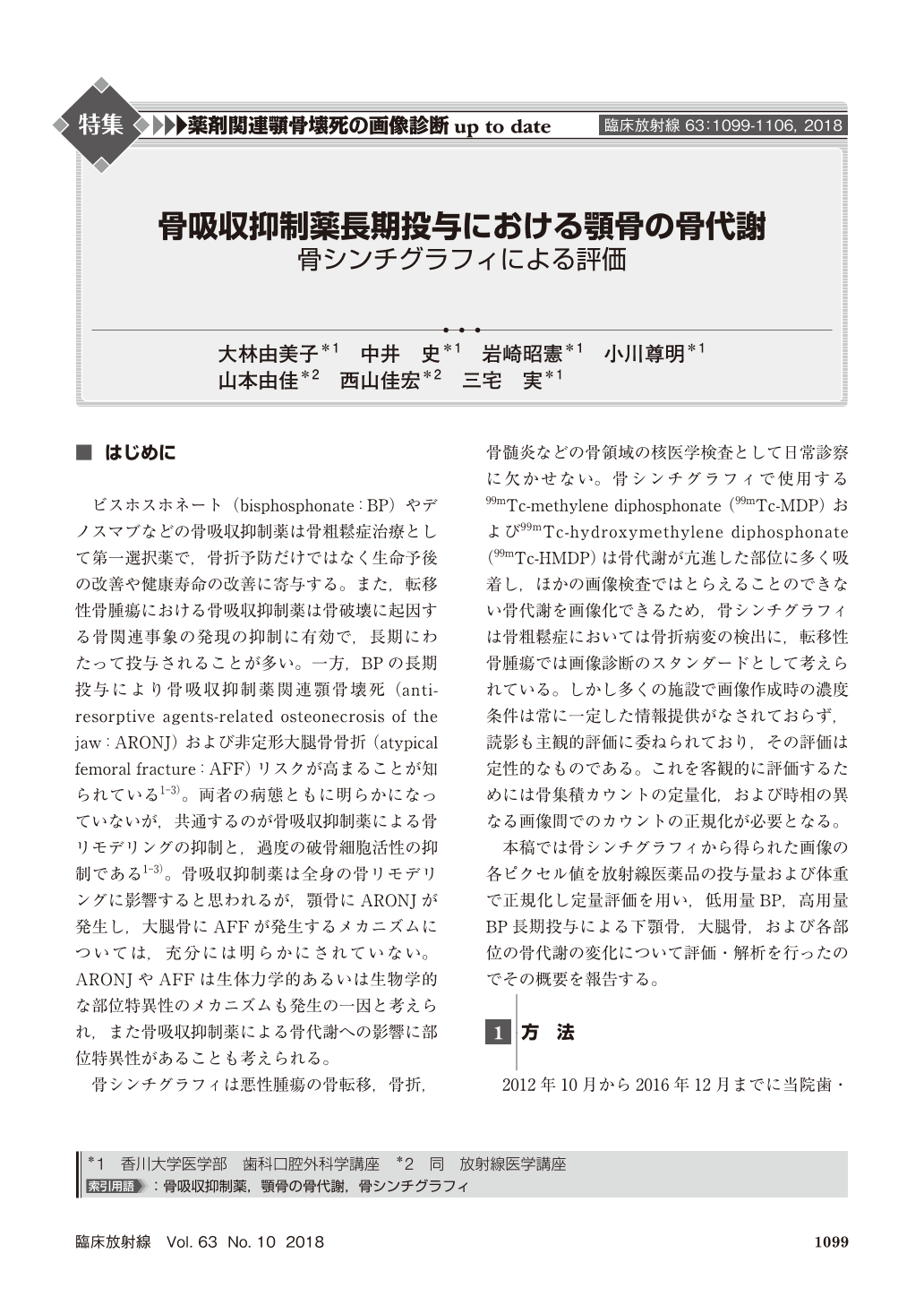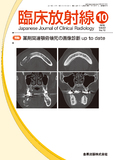Japanese
English
- 有料閲覧
- Abstract 文献概要
- 1ページ目 Look Inside
- 参考文献 Reference
ビスホスホネート(bisphosphonate:BP)やデノスマブなどの骨吸収抑制薬は骨粗鬆症治療として第一選択薬で,骨折予防だけではなく生命予後の改善や健康寿命の改善に寄与する。また,転移性骨腫瘍における骨吸収抑制薬は骨破壊に起因する骨関連事象の発現の抑制に有効で,長期にわたって投与されることが多い。一方,BPの長期投与により骨吸収抑制薬関連顎骨壊死(anti-resorptive agents-related osteonecrosis of the jaw:ARONJ)および非定形大腿骨骨折(atypical femoral fracture:AFF)リスクが高まることが知られている1-3)。両者の病態ともに明らかになっていないが,共通するのが骨吸収抑制薬による骨リモデリングの抑制と,過度の破骨細胞活性の抑制である1-3)。骨吸収抑制薬は全身の骨リモデリングに影響すると思われるが,顎骨にARONJが発生し,大腿骨にAFFが発生するメカニズムについては,充分には明らかにされていない。ARONJやAFFは生体力学的あるいは生物学的な部位特異性のメカニズムも発生の一因と考えられ,また骨吸収抑制薬による骨代謝への影響に部位特異性があることも考えられる。
Why medication-related osteonecrosis specifically affects the jaw is still unknown. Our primary objectives were to assess changes in bone metabolism of the mandible in response to long-term bisphosphonate(BP)therapy and to compare the bone metabolism changes of the mandible with other bone sites. The results demonstrated that bone metabolism of the iliac crest and intertrochanteric femur was suppressed by long term administration of BP, but the mandible was enhanced. There was no significant difference in bone metabolism either with the administration of low dose BP or high dose BP. The effects of long term administration of BP were site specific.

Copyright © 2018, KANEHARA SHUPPAN Co.LTD. All rights reserved.


